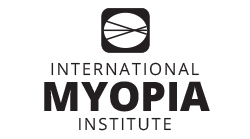
 This summary of an International Myopia Institute (IMI) white paper was created by and is used with permission from the Centre for Ocular Research & Education (CORE) at the University of Waterloo’s School of Optometry & Vision Science in Waterloo, Ontario, Canada. It originally appeared in the April 2019 issue of Contact Lens Update, CORE’s free access online resource.
This summary of an International Myopia Institute (IMI) white paper was created by and is used with permission from the Centre for Ocular Research & Education (CORE) at the University of Waterloo’s School of Optometry & Vision Science in Waterloo, Ontario, Canada. It originally appeared in the April 2019 issue of Contact Lens Update, CORE’s free access online resource.
 The intent of the clinical trials and instrumentation report was to guide clinical trial protocols and to inform future instrumentation development.
The intent of the clinical trials and instrumentation report was to guide clinical trial protocols and to inform future instrumentation development.
Myopia progresses over a number of years; a clinical trial must evaluate efficacy over a long enough period to ensure continued efficacy beyond any initial treatment effect. The recommended minimum length of a clinical trial assessing the efficacy of a treatment for myopia was 3 years.
Inclusion and exclusion criteria vary according to the treatment effect being investigated and the specific study hypothesis. Typically, participants should be aged 6-12 with a cycloplegic myopia refractive error of at least -0.75D, astigmatism ≤1.00D, anisometropia ≤1.50D and corrected visual acuity of at least 20/20. Typical exclusion criteria include: History of previous myopia control treatment; ocular pathology; binocular vision anomalies; medication that can affect pupil size, accommodation or have an impact on the ocular surface; any systemic disease that may affect vision.
The committee identified the importance of a control group for clinical studies, the control being chosen based on the treatment modality being evaluated. For example, if a drop is being assessed, the control should be a drop using the same vehicle (if possible) as the active treatment.
Randomization is a critical part of any clinical trial and randomization schemes should be generated using appropriate statistical software. Participants should not be exposed to the randomization until eligibility has been confirmed. Once randomized, trials should use double masking, where possible, such that neither the participant nor the investigator is aware of the treatment assignment.
The primary outcome measures for a myopia control study are typically refractive error and axial length. Cycloplegia should always be used when measuring primary outcomes to minimize variability. It is suggested that cycloplegic should be achieved using 2 drops of 1% tropicamide instilled 5 minutes apart, with the measures being taken 30 minutes after drop installation.
The question of rebound after ceasing treatment is important to consider for any myopia control treatment. To this end, assessing for rebound effect in which the participant is switched to the control group could be considered an essential component. However, ethical implications need to be considered for each clinical trial.
Adverse events are to be anticipated in any clinical trial. They may be related to the treatment or be totally unrelated. Irrespective of the cause and the outcome, it is imperative that clinical trial protocols clearly outline how adverse events are to be categorized and reported. Investigators need to be aware that all adverse events should to be recorded, even if assumed or known to be unrelated to the treatment.
When reporting data, it is important that similar reporting criteria are used across studies. Data should be reported in a way that can be compared to other clinical trial data. For example, the way in which the treatment effect is reported should be consistent and should indicate the time period over which the effect was measured. Currently there is no minimum percentage reduction in myopia published for a treatment to be considered effective. Anecdotally, clinicians quote 40% as being clinically meaningful. However, any treatment effect could be considered clinically meaningful compared to no effect in a control group. One way that could be considered as ‘standard’ would be to discuss how many people have avoided developing high myopia as a result of the treatment strategy.
The most common main outcome measures are cycloplegic refraction and axial length measures, and clinical studies must have robust repeatable ways to measure and record these primary variables. The same instrumentation should be used throughout the clinical trial and must be calibrated and validated using an eye-model. The committee recommends using an optical biometric, non-contact method for measuring axial length and an open-field autorefractor for cycloplegic refraction.
Dependent on the treatment method being evaluated, there may be other secondary outcome measures that may be of interest, for example, peripheral refraction, choroidal thickness, and pupil size. No different to any primary outcome measures, any assessments that are carried out should b e undertaken in a consistent way across the study period.
It is feasible that a treatment could be very effective but unacceptable to the study participants due to side effects or adverse events. Patient reported outcomes should be recorded, and these are typically in the form of a series of standard questions that are asked of the participant and possibly the parent/guardian. Treatment compliance should also be assessed. This may be part of the series of questions to the participant, as well as some form of product accountability assessment, such as counting the returned contact lenses at each study visit.
For a clinical trial to be successful, participants need to be recruited and retained. Participants and parents/ guardians must know what is expected of them for the duration o f the study. Consent documents should be clear, and written in a language that can be easily understood. There should be separate documents for children to read and sign (called an ‘assent form’).
As more and more study results are published, it is likely that researchers will be looking to standardize protocols and the way in which results are reported such that direct comparisons can be made between different treatment strategies. This will support clinicians in their decision making when it comes to choosing an appropriate myopia control strategy for their patients.
Other CORE summaries of IMI white papers
CORE’s Contact Lens Update, a free online resource













